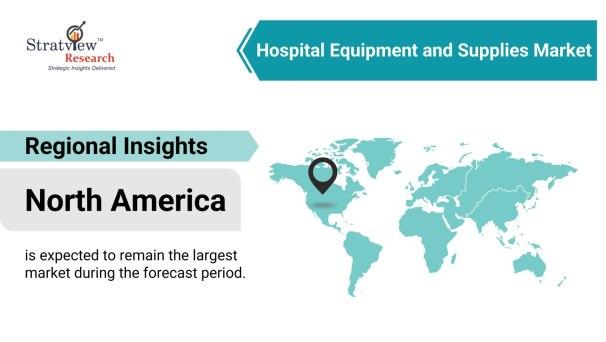The Hospital Equipment and Supplies Market is segmented by (Sterilization and Disinfectant Equipment, Disposable Hospital Supplies, Patient Examination Devices, Syringes and Needles, Other), End-User (OEMs, Aftermarket), and Region (North America, Europe, Asia-Pacific, and the Rest of the World).
The Evolving Landscape of Hospital Equipment and Supplies: Trends and Insights
The hospital equipment and supplies market is in a state of constant evolution, driven by a confluence of factors that are reshaping healthcare delivery. From innovative technologies to changing patient demands, here are some key trends and insights that illuminate the path forward.
Telemedicine Integration: The rise of telemedicine has expanded the need for specialized equipment and supplies, such as telehealth carts and remote monitoring devices. Hospitals are investing in these technologies to provide remote care and enhance patient access.
Data-Driven Decision-Making: Hospitals are increasingly leveraging data analytics to optimize their equipment and supply management. Predictive analytics help forecast demand, reduce waste, and improve cost-efficiency.
Sustainability: Sustainability has become a central concern in healthcare. Hospitals are seeking eco-friendly alternatives for single-use items and adopting energy-efficient equipment to reduce their environmental footprint.
Advances in Diagnostic Tools: The market is witnessing remarkable advancements in diagnostic equipment, enabling quicker and more accurate diagnoses. This includes point-of-care testing devices and imaging technologies.
Infection Control: In response to the COVID-19 pandemic, there's a heightened focus on infection control. Hospitals are investing in personal protective equipment (PPE), sterilization equipment, and disinfectants to ensure patient and staff safety.
Supply Chain Resilience: Supply chain disruptions have underscored the importance of resilience. Hospitals are diversifying their suppliers, adopting digital inventory management systems, and stockpiling critical supplies to mitigate future risks.
Customization: Hospital equipment and supplies are becoming increasingly customizable to meet the unique needs of different healthcare settings and patient populations.
In conclusion, the hospital equipment and supplies market is undergoing rapid changes driven by technological innovation, sustainability goals, and the imperative of ensuring a resilient healthcare system. Adapting to these trends is essential for hospitals to provide high-quality care efficiently and sustainably.
